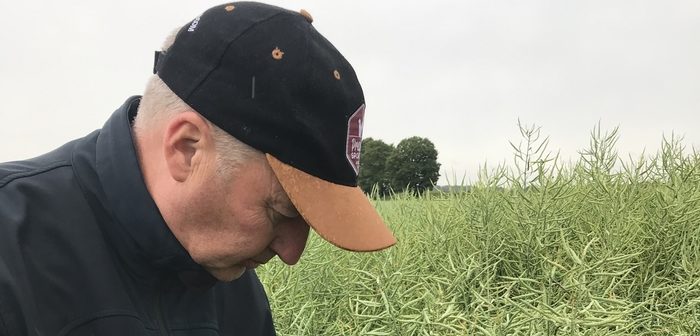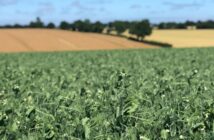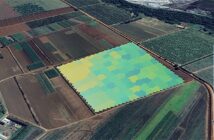The current price of oilseed rape close to £500/tonne making this crop a potentially profitable one to grow, providing a Gross Margin of £600/ha, and Neil Groom, Technical Director for Grainseed, is anticipating a revival in the area of rape this autumn as a consequence.
Rod Clarke of Grainseed says that “growers intending to grow oilseed rape this autumn should start by taking a careful look at the varieties available, their disease ratings, maturity ratings, vigour and standing power.”
“Rape must be established successfully into a moist warm quality seedbed preferably in the first two weeks of August. However, it is moisture in the seedbed which is of paramount importance.“
To achieve a good yielding crop, Rod has come up with the top ten management decisions to successful establishment, even crop emergence and easier management.
Select varieties with good all-round disease resistance. All Grainseed rape varieties have multigene resistance to Phoma stem canker, have good light leaf spot ratings and are tolerant to Verticillium. Es Mambo has a rating of 7.8 for Phoma, 6.4 for Light Leaf Spot and has been top in independent trials against Verticillium. Keeper has a 7 for Phoma. 6 for Light leaf spot and good Verticillium tolerance.
Choose varieties with good vigour, both in the autumn and in the spring. The variety Keeper bred by Mike Pickford for the UK market has a much larger seed than most varieties and can provide more energy for the seed to germinate and grow. It shows good autumn and spring vigour. Elevation, another Mike Pickford variety, has excellent seedling vigour and good yields.
Plan your rotations carefully to allow the best conditions for next
year’s first wheat and to avoid build-up of pests and diseases in the soil. Work by NIABTAG show that a previous crop of rape increases yield of wheat by 31%, as it fits better into the rotation and allows optimum drilling window for wheat. Cabbage Stem Flea Beetle (CSFB) pressure is higher in closer rotations. Rape should be grown in a five to six years rotation to avoid CSFB, take-all and clubroot build up.
Cut the straw of the previous crop higher – this puts off pigeons from landing and longer stubbles encourage spiders and spiders’ webs that can catch flea beetle adults. Flea beetles can detect green crops and where there is a longer stubble which appears mostly brown, it tends to deter the insect pest.
Drill into warm moist seedbed – this is an essential prerequisite. Try to drill in the first 2 weeks of August. A good seedbed will provide good soil to seed contact and avoid clods for flea beetles to take cover.
Use an adequate seed rate (for conventionals around 100 seed/metre²). Conventional seed is lower cost than hybrids.
Apply fertiliser in the autumn to give the crop an early boost.
Double roll to improve seed to soil contact.
Use companion crops where appropriate. Companion crops, sown within 24 hours of combining can mask the attraction that rape has to CSFB and they can attract beneficial insects. Berseem clover companion crops can help with soil health, soil drainage and structure. They can also reduce pigeon grazing.
Keep your establishment costs as low as you can.




